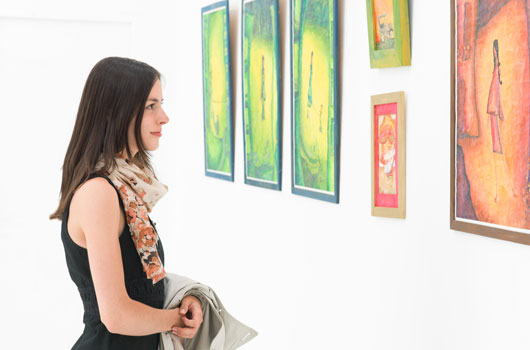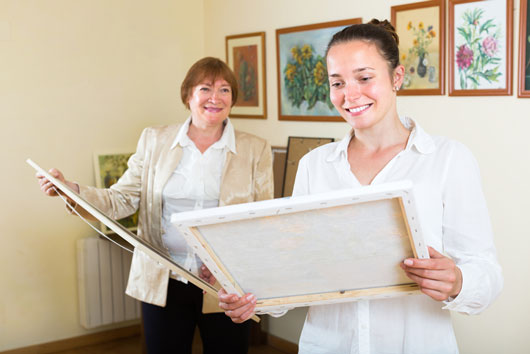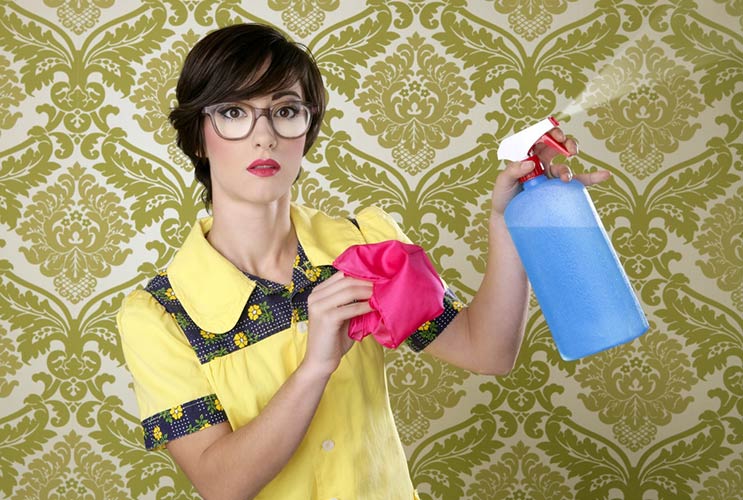
The art world can seem like an overwhelming place, especially if you slept through art history back in college. In fact, as Huff Post reports, recent survey by online art dealer UGallery, found that “70 percent of people have never bought artwork—ever. And 20 percent found it to be the most intimidating shopping experience of all—more so than shopping for real estate or an expensive car.” But it doesn’t have to be that way. If you want your home to have personalized and artistic touches, and you’re ready to build an art collection, then we’re here to help ease you into the process. After all, there is a seemingly endless number of options when it comes to works of art, and it is completely subjective what art you will like and what you will consider to be beautiful. We all have different tastes, different needs and different budgets, so there isn’t really a right or wrong answer when it comes to buying home art. Which is why you need to know where to begin and you need some tips and expert insight to help guide you.
As Forbes reports, according to Peter Hort, an heir to the Hort art collection and an art expert, “it’s really about educating yourself, setting and sticking to your budget.” He continues to say that you first need to “decide what you like…talk to other collectors or art consultants. Go to galleries and start to meet these people and talk to other people in the community.” As with most skills, knowledge is power and practice makes perfect. Get educated, get experience, and enjoy the process.
Read Related: 10 Gift Ideas Using Your Children’s Artwork

So where is a good place to begin? Well, for starters, you need to figure out what you like. As with fashion, buying beautiful clothes that will look terrible on your body or totally clash with your style makes no sense and is a waste of money. You need to figure out what looks good on you and what makes you feel good before you can update your wardrobe. Same rule applies to art. Look at art everywhere around you—from offices to hotel lobbies to your friends’ homes and design books. Go to museums, galleries, stores and showrooms and simply keep your eyes open until you see something that strikes you. Once you find things you like, take pictures, take notes, jot down artist names, gallery names, addresses, artwork styles or color schemes. Until you know what you like, you’ll never know where to look or what to buy.

Next, consider buying home art that has sentimental value. Beautiful art is nice, but beautiful art that takes you back to your childhood, or that represents a part of your life or your memories can be meaningful in a whole new way. You can seek out photography of a place you love, or art that reminds you of something your mother used to display in her house. You can look for a sculpture of a dog that resembles your pet growing up, or a painting of colors that remind you of summers at the beach. Make it personal—this art isn’t just to impress guests or display for crowds at a gallery; it’s going to live in your home and become a part of your life, so find art that has a place in your home and your heart because it carries meaning and memories.
Designers and art experts often argue that you should look for art that you love first, and not try to fill a specific space or empty wall. After all, if you force a purchase just so that you don’t have to stare at a blank countertop, you might regret it later. Instead, buy what you love. Remember that “you have to live with the painting or sculpture or installation, so you should like what it looks like, how it feels to have it in your home. Unless you’re viewing art as a pure financial investment, trust your aesthetic response,” argue William Grimes and Rovin Pogrebin in an article for the NY Times.

Another thing to know before you go to buy art is that you might end up spending a pretty penny. Art can be expensive for a lot of reasons. If you’re looking at original art then you are dealing with a one-of-a-kind piece that will likely have a very high price tag, especially if you’re dealing with an established artist. According to Houzz contributor Laura Gaskill, the price tag for original art is because “an artist can profit only once from the sale of an original work, such as a painting on canvas; then it’s gone. Even if the work grows in value over time, it is the collector who profits.” One step down from original art would be a limited edition piece or print, which exists more than once in the world, but was produced in limited numbers, so the price tag will reflect that availability.
Remember, your art is an investment, not an impulse buy that will go out of style next season. It’s for life, so as far as worthy spending goes, you should keep in mind that you’ll be enjoying this art forever and for many generations to come. That said, when it comes to spending, as with many other industries and investments, price tags are often negotiable, so don’t be afraid to try and ask for a lower price. After all, you’ll never know until you ask and worse case scenario, if you really love the piece you’ll pay the sticker price anyway.












Leave a Reply
Want to join the discussion?Feel free to contribute!